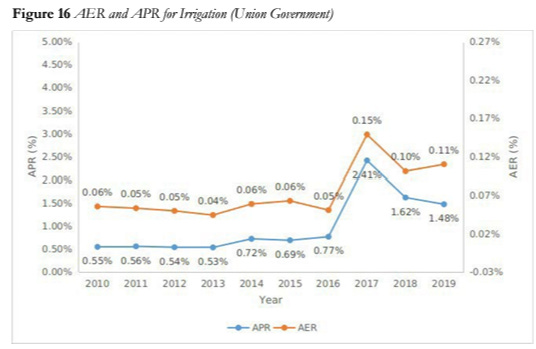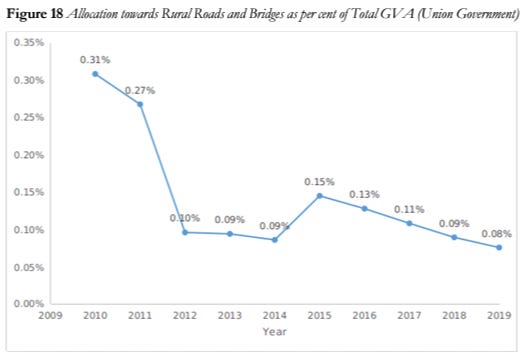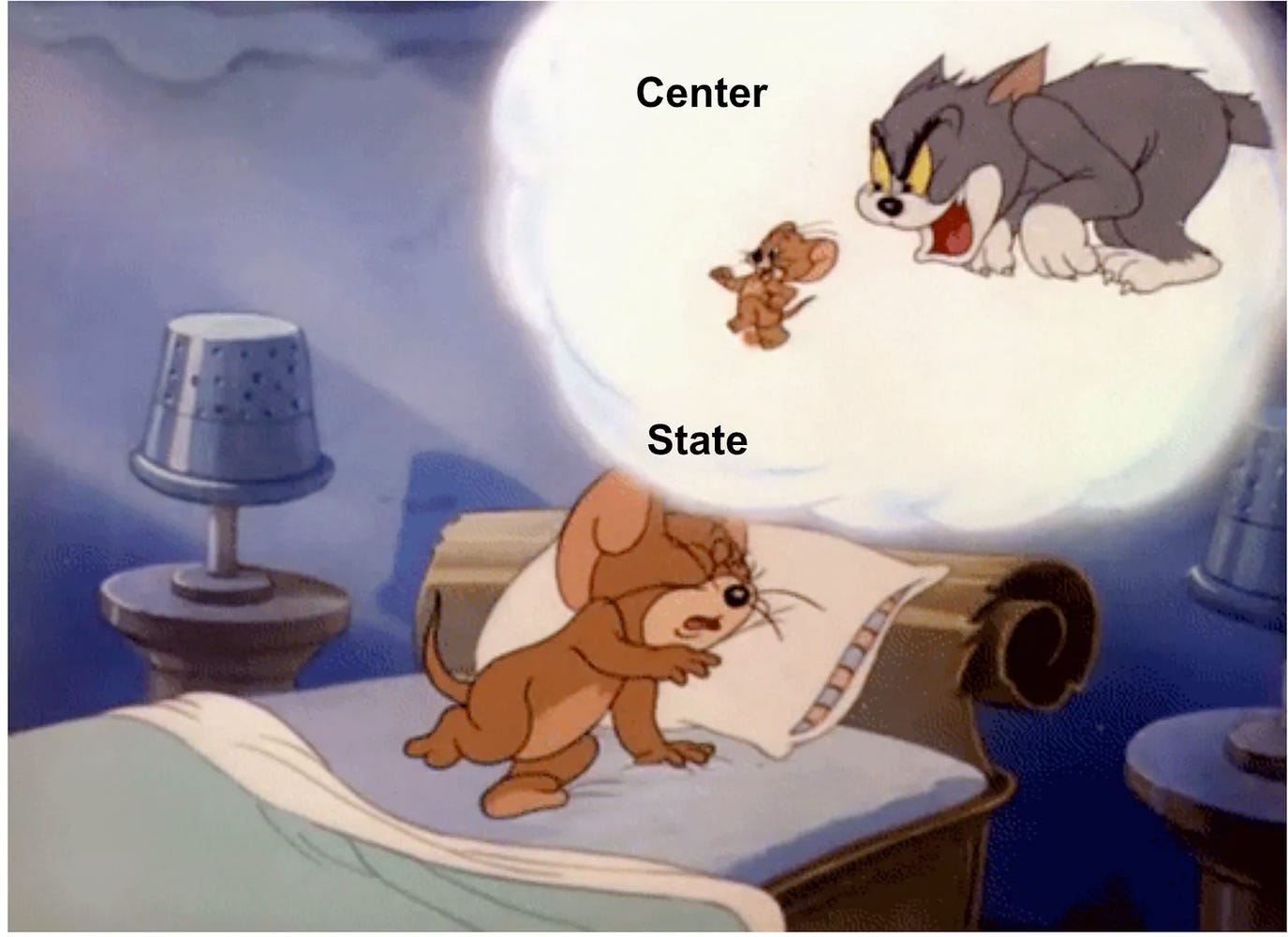ABM Briefing: Bayer's 'Forward Farming Initiative' Enters India
Hello!! My name is Venky and I thank you for reading ABM Briefing, my new column where I break down important news and help you stay on top get to the bottom of things. If you like what you see, I encourage you to subscribe and receive exclusive perks - invitations to join ABM Townhalls, special discounts on ABM Publications, Global Agritech 101, 201 cohort courses and a lot more.
If the confusion around “Regenerative Agriculture”, “Climate Smart Agriculture” and “Climate-Smart Regenerative Agriculture” (I spoke yesterday in one such event) weren’t enough, Bayer takes the word salad around transitioning smallholder farmers to have the cake (climate change) and eat it (productivity) further.
Bayer’s “Forward Farming” Initiative was officially launched recently in India to showcase regenerative ag best practices in an 18-hectare demo farm in Panipat, Haryana to address the challenges awaiting smallholder rice cultivation's future.
Before I venture further, I have a serious question to ask.
If “progressive” farmers don’t pursue “forward farming” initiatives, who would they become?
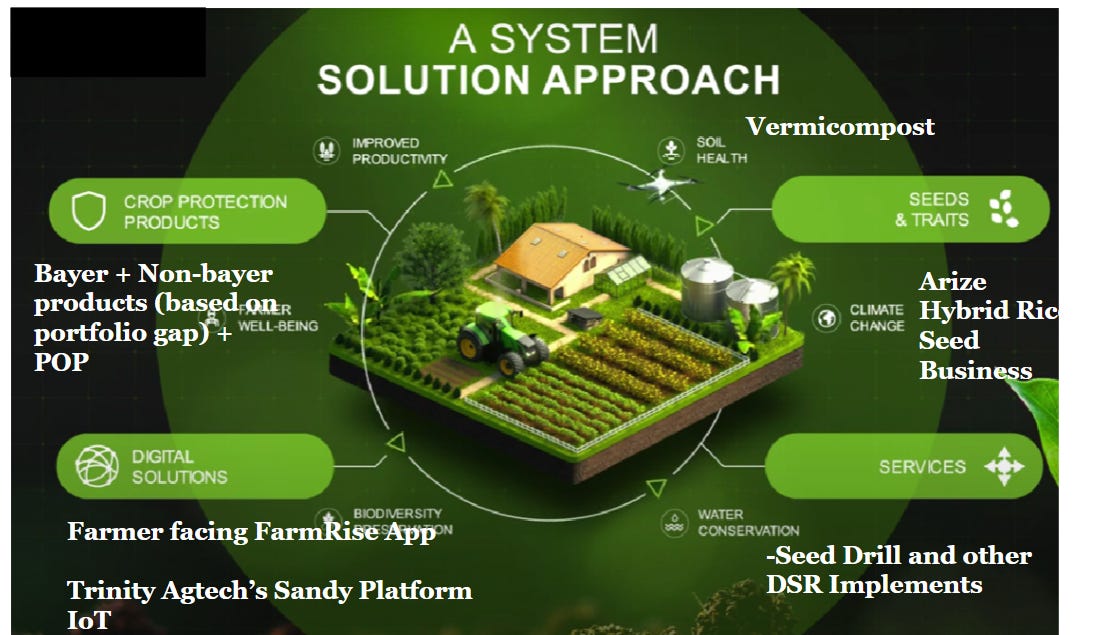
Jokes apart, Bayer wants to bring the DSR production system to one million hectares in India by 2030 through its DirectAcres program, extending the same formula they applied with Better Life Farming.
How is this different from Bayer’s earlier Better Life Farming (BLF) Program?
In BLF, VLEs partnered with local traders procuring the produce from farmers who followed Bayer’s package of practices. In the case of Direct Acres and FarmRise Ventures, the attempt is being made, I am told, to build internal capabilities to procure rice directly from farmers and help them make profits.
Farmrise Ventures has bigger ecosystemic ambitions that befit a new name: “Middlemen collectives”: It aims ‘to digitize FPOs and PACS and links them to an ecosystem of lenders, off-takers and input companies to create commercial value’
This distinction is equally clear in naming the “Forward Farm” partners.“Ved Prakash Saini”. I couldn’t find anything about this farm partner. What is interesting is to see the participation of Farmart as an e-commerce partner.
It is also fascinating to watch how Bayer’s strategic agenda of Dynamic Shared Ownership is playing out in smallholding contexts, further strengthening my thesis on the Indian Agri-Input Industry’s Avengers moment.
Whether it is DirectAcres or FarmRise Ventures, these are ventures that are currently being run in a decentralized manner before they get embedded in Bayer’s core business.
In my Agri-Input Industry Avengers thesis detailing the JV between Ricetec and Mahyco, I wrote,
“In these challenging times for the Indian Agri-Input industry, is this the Avengers moment for the Agri-Input industry, with so many coalitions and ecosystemic gameplays emerging across the agri-input market ecosystem? Or is this the best evolutionary response to today’s stringent regulatory environment? Mind you, we are dealing with decarbonizing production systems of rice and wheat at scale in smallholding contexts. Not simple, linear systems with yield assurance goals.”
How these decarbonisation efforts would succeed in having the cake while letting the farmers eat it remains to be seen. It will be interesting to track.
<Advertisement from Agribusiness Matters>
Om Routray and I are excited to launch the fifth cohort of "Global Agritech 101" - Designed by and designed for those working in the agritech industry.
As one of the participants shared in his testimonial, It is an "Engineering and MBA friendly Agritech course". Think of it as learning to surf by those already surfing the waters, not cosily seated as a lighthouse away from the shore.
Today, most courses on agritech are taught by lighthouses who don't have the real experience of being in turbulent waters. How else will you learn surfing rather than by those who are already in the water?
You can only learn by doing and do by learning.
Om and I teach this course to help founders, agritech/foodtech professionals, development players, investors come to speed quickly.
Have you seen those boards at the park entrance that say " You are here"?
We are that board for the agritech theme park that's getting hot, exciting and frustrating at the same time.
Dates: 17th, 24th September and 1st October 2024
Time: 8 - 10 PM IST
The biggest perk of the course is that you get to be part of the alumni community and learn from fellow participants and get access to subsequent cohorts of Global Agritech 101 free of cost. This would be the final cohort for 2024!
Here are details of the modules:
Module 1: Agritech Evolution (2 Hours)
> Technological Evolution Patterns in Agritech and Beyond
> Five Climatic Patterns Affecting Upstream and Downstream Agritech
> Geopolitical Dynamics Affecting Agritech Adoption in Asia, Africa, and Europe
> Implementation Patterns and Response to Consumer Tech
> Why Agritech Innovations Cluster Around 1980s
Module 2: Roller Coaster Ride of Global Agricultural Value Chains (2 Hours)
> Understanding Horse (Value Chain) and the Cart
> Seven Types of Agricultural Value Chains
> Case Studies of Regenerative and Non-regenerative Agricultural Value Chains
> Bioregions and Inverting Value Chains
> Value Chain, Extended Value Chain, and Digital Value Chain
Module 3: Tech of Agritech- Problems and possibilities (2 Hours)
> Tech from Funding Numbers
> Tech from First Principles - Mechanism-Organism Philosophy Spectrum
> Six Timeless Elements of Agriculture - Seeds, Soil, Water, Labour, Nutrients, Protection and the role of Technology
> Understanding Agro warfare
> Case Study on Saas in Agritech
> VC Interest Vs Scaling
You can learn more about the course, check out the reviews and sign up here.
In Other News:
Indian Government’s 2817 Crore (339.4 Mn USD) Budget for Digital Agriculture
With the Indian Government allocating Rs. 2817 crore ( $339.5 Mn USD) for its Digital Agriculture mission, it is quite evident that the government has drunk the “Digital Public Infrastructure” (DPI) Kool-Aid.
Can DPI for agriculture improve farmers’ lives?
For DPIs to unlock value for farmers in an Indian agricultural context, it has to tackle three fiendishly complex challenges that would probably make AGI (Artificial General Intelligence) computational problems child’s play in comparison.
unified farmer database
a live database of land records
a live database tracking crops sown in every season
While there is considerable excitement around the Rs. 2817 crore INR ($339.4 Mn USD) mission on digital agriculture that has been announced by the Indian government, what we seem to be missing out on the nuance is that we are trying to cope with the infrastructure gap by deploying and scaling up digital public infrastructure.
DPI is here. I is missing.
What infrastructure gap are we talking about?
We need massive investments in pack-houses to bridge the 99.7% gap.
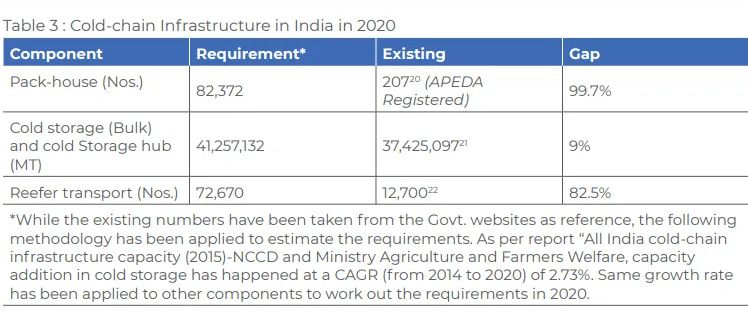
We need massive investments to increase irrigation infrastructure.
We need massive investments in development of rural roads and bridges
Given how Indian agriculture has been designed in its foundational constitutional element with the State and Center playing Tom and Jerry games of dominance, how do we create conditions for the State to launch their respective state DPIs and DPGs?
Now wait.
Why not look at the entire cooperative federalism project as a bunch of foundational rules that have to be followed under the policy protocol between the Center and the State?
Wouldn’t that be a truly exciting future for Indian agriculture?
So, what do you think?
How happy are you with today’s edition? I would love to get your candid feedback. Your feedback will be anonymous. Two questions. 1 Minute. Thanks.🙏
💗 If you like “Agribusiness Matters”, please click on Like at the bottom and share it with your friend.






